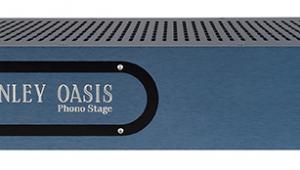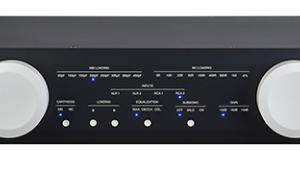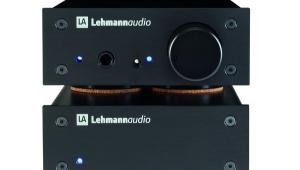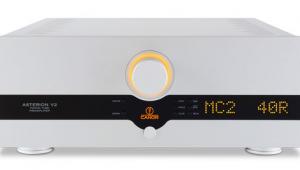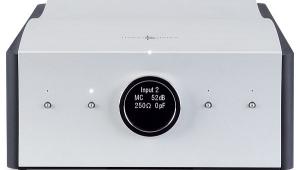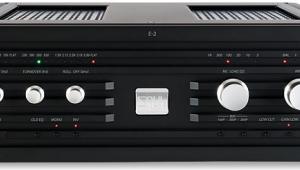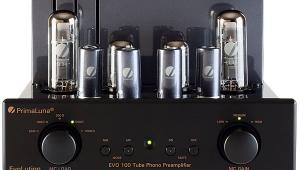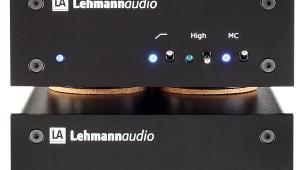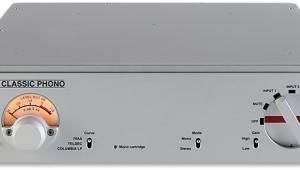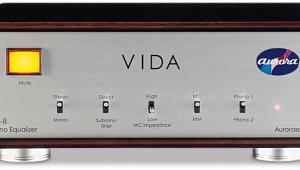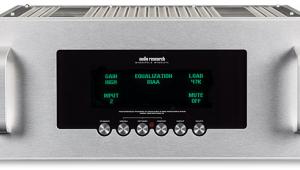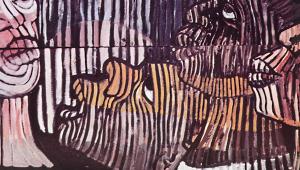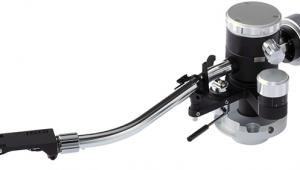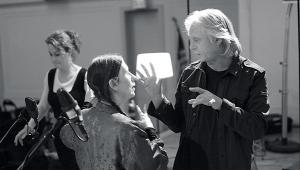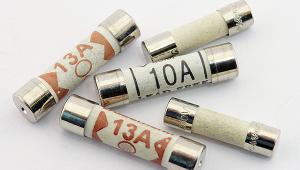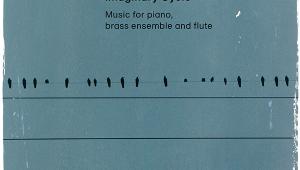Soulnote E-2 Universal Phono Preamp Page 2
![]() Warm Embrace
Warm Embrace
Used in three systems in place of three conventional phono amps from £500-£7000 and two DS Audio energisers, the E-2 demonstrated an instant elevation in sound quality. The importer, however, warned that it wouldn't really sing until it was suitably warmed up. And, yes, the sound sweetened over roughly an hour before settling into its optimal groove. Alas for the rest of my quotidian existence, so exhilarating was the performance that I entered one of those irresistible analogue frenzies, digging out LP after LP. I had ten-hour sessions three days in a row. Yes, it's that seductive.
It was a sequence of vinyl moments, each exposing another area not just of competence but of brilliance. Worried though I may have been about a lack of warmth as all but one of my phono amps is valve-based, the initial notes of Stevie Wonder's 'Too High' [Innervisions; Tamla Motown STMA8011] told me to relax. By the time the vocals emerged, I was able to dismiss any concerns about solid-state vs. tubes. This phono stage oozes warmth, caressing the music.
That's not to say it's too polite or forgiving. 'Living For The City' from the Stevie Wonder album demands snap and force, which the E-2 conveyed. The entire record also exposed another strength which will endear the E-2 to headbangers, funk fetishists, lovers of acoustic jazz and more: the bottom end is so rich, so ripe, and so fulsome that even LS3/5As were rendered bass-biased.

It sounded huge, and this applies to the soundstage too. While fundamentally unplugged, Leon Redbone Live [Green/Stone Records GSR3-851] is one of the most natural-sounding concert LPs I can name. Obviously, recreating a sense of space would be a priority with any live album, but in this case, it's reproducing a voice so resonant that one is reminded of aged blues singers heard only via 78s. It's as if those unused eq values on the phono amp's fascia were begging me to dig out something vintage. Redbone's voice was a throwback to an earlier time, and the E-2 placed it right in the middle of the room.
Shock And Awe
What made me do a double-take was the arrival of a tuba – either that or a Sousaphone – causing a jolt, like the moment when Bernadette Peters pulls out a trumpet in the scene from The Jerk when Steve Martin is playing the ukulele on the beach. Lush, fat, bla-a-a-r-r-rting out of the speakers – it was a moment of near epiphany. The first thought it inspired was: What must I do to find £6800? Two LPs into the session, and I was in love.
That feeling reappeared again and again. I turned to Keely Smith Sings The John Lennon-Paul McCartney Songbook [Reprise R6142] to test the mono button, its use focusing the central image while somehow adding a sense of depth. It was then that it occurred to me I had some circa 1950-4 LPs which might make use of the legacy eqs.
Soulnote's user manual lists a staggering 100+ eqs for both 78s and early pre-RIAA LPs. Sure enough, Mickey Katz's "Borscht" [RCA EPB3193] and Mickey Katz [Capitol H298] responded to the settings advised in the list. Was it wishful thinking? That's hard to say. Slightly tweaked eq – especially roll-off and turnover – made audible changes from flat RIAA but they were so slight as to be no more radical than a tiny change in VTA or tracking force. But wow! I hadn't heard these '50s mono gems sound so vivid.
Free To Choose
Lastly, on the E-2's DS Audio optical compatibility – it begs a question as to why Soulnote and five other companies have addressed it. The answer must be that DS Audio is selling enough cartridges to justify it. More to the point is that for the target audiophile, including those apocryphal Japanese enthusiasts who allegedly use a different cartridge for each record label, it represents more freedom to choose.
So here's a KK tip. As the E-2's sound closely matches that of the DS Audio DS 003 energiser [HFN Oct '21] at £3147, the E-2 affords cartridge fetishists a cheap way to try out an optical cartridge. How so? DS Audio's most affordable model, the DS-E1 [HFN May '19], is £1162 on its own. You do the maths.
Hi-Fi News Verdict
Despite little need for 78rpm EQ, I found the Soulnote E-2 to be everything one could want in a phono amp, whether or not one owns a DS Audio cartridge. So clean, detailed and open is the sound that I can see users swapping cartridges just for the fun of it, to challenge the E-2's prowess. I fed it seven entirely different cartridges and it made each of them sing. This phono stage is utterly magnificent.

